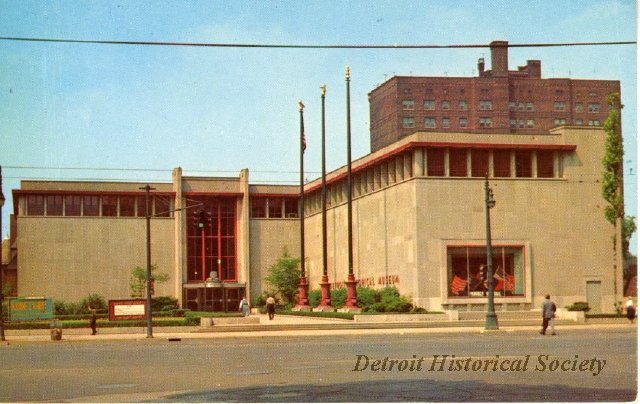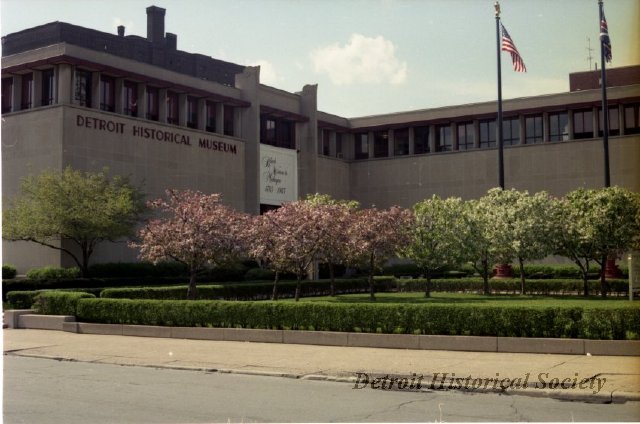Cobblestone streets, 19th century stores, an auto assembly line, toy trains, and a fur trading post from the 1700s are only a few of the wonders to see at the Detroit Historical Museum.
For more than 80 years, the Museum has chronicled the life and times of the region, safeguarding its rich history. When attorney and historian Clarence M. Burton donated his collection of historical papers to the Detroit Public Library in 1914, he started a chain of events that ultimately led to the creation of the Detroit Historical Museum. In December 1921, Burton brought together 19 prominent local historians to found the Detroit Historical Society, an organization dedicated to the preservation of the city’s history. In 1927, membership offices were leased and Society treasurer J. Bell Moran was appointed to set up a museum. A curator was hired and on November 19, 1928, the “highest museum in the world” opened in a one-room suite on the 23rd floor of the Barlum Tower, now the Cadillac Tower.
Although the Great Depression in the 1930s hit the region hard, the 1940’s brought success to the Society’s efforts to build a permanent museum. In 1942, popular Detroit New columnist George W. Stark became president of the Society. Stark commanded the respect and influence necessary to raise the considerable funds needed to construct a new museum. By 1945, the Society had raised more than $250,000. The Society offered to turn over both the money raised and its 15,000 item collection to the City of Detroit, in exchange for the city’s agreement to create a historical commission to build and operate the planned museum.
On July 24, 1951, the 250th anniversary of Detroit’s founding by Antoine Laumet de la Mothe Cadillac, the new museum was dedicated in an elaborate ceremony. In attendance were such dignitaries as Governor G. Mennen Williams, Mayor Albert E. Cobo, U.S. Senator Homer Ferguson, the French and British ambassadors and Detroiter Ralph Bunche of the United Nations.From the late 1940s to the 1960s, the Museum became one of the leading cultural institutions in the Midwest through its changing exhibits, tours, special events and educational programs.
By the 1990s, the Museum rode a wave of success. In 1993, the Detroit Historical Society raised nearly $4 million for exhibits, educational programs and an endowment fund for the Museum. A new permanent exhibit, made possible by the success of the campaign, opened in 1995 – The Motor City Exhibition. This exhibit traces Detroit’s development into the Automobile Capital of the World and includes an operating assembly line with a two-story body drop from the General Motors Cadillac Division Clark Street Plant. In 1998, the Museum opened another permanent exhibition, Frontiers to Factories: Detroiters at Work 1701 – 1901. This exhibit depicts the city’s first two hundred years, as it grew from a French fur trading post to a major industrial center.
In March 2006, the Detroit Historical Society once again assumed operational responsibility for the Museum, after signing a formal agreement with the City of Detroit.

